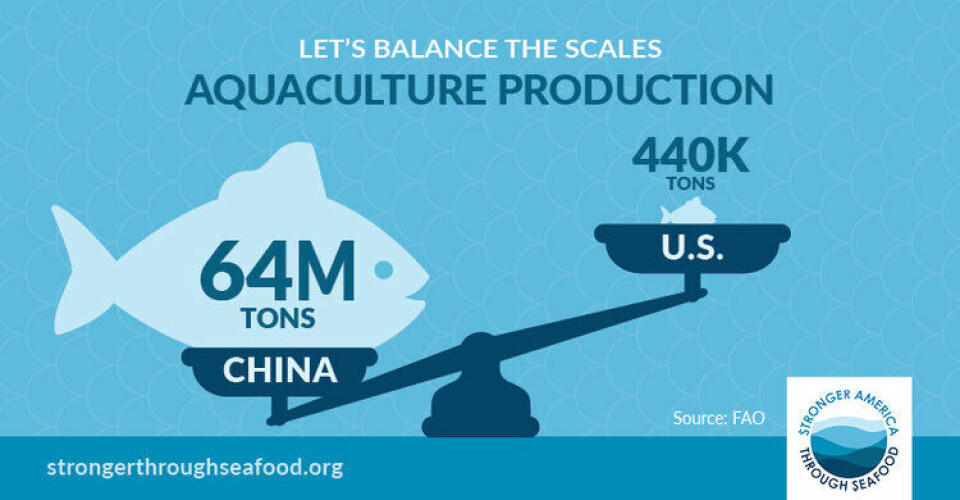
Aquaculture campaign group is on board with NOAA
Industry coalition says yes to government body's proposals to help sector grow
Stronger America Through Seafood (SATS), an industry coalition that advocates for federal legislation to support an expanded offshore aquaculture sector in the United States, has given its backing to proposals from the government's National Oceanic and Atmospheric Administration (NOAA) that are aimed at helping the industry grow.
SATS has submitted its comments to NOAA Fisheries on the agency’s Draft Aquaculture Economic Development Plan, detailing support for many components and offering additional focus areas.
NOAA is part of the US Department of Commerce, and the Strategic Plan for Aquaculture Economic Development outlines actions that federal agencies can take within their existing statutory authorities and budgetary resources to support a robust, resilient, globally competitive, and environmentally sustainable domestic aquaculture sector. The US currently has a labyrinthine aquaculture permitting structure that is complicated, costly, and time consuming.
Hindered by bureaucracy
The NOAA plan complements two other National Science and Technology Council (NSTC) plans to fully comprise an update to the National Aquaculture Development Plan and lay out a framework to support expansion of the domestic commercial and conservation aquaculture sectors.

Drue Banta Winters, campaign manager for SATS, said: “Aquaculture expansion not only addresses food security needs, but also presents an opportunity to create quality jobs and reduce our reliance on seafood imports, strengthening America's food independence. Yet, to build a robust, resilient, globally competitive, and environmentally sustainable domestic aquaculture sector, federal agencies must have clear statutory authority and a timely and affordable regulatory process to establish farms in US waters. Until that is established, aquaculture will remain hindered in the US.”
Valuable proposals
SATS stated in its letter to NOAA that it finds the following proposals of the Economic Development Plan valuable:
- expanded siting analysis for future Aquaculture Opportunity Areas (AOAs) in federal waters
- interagency coordination on National Environmental Protection Act (NEPA) review and Environmental Impact Statements (EIS)
- development of science-based tools and modelling
- workforce training and community planning activities
- expanded financing opportunities through grants and loans
- investments in development of aquaculture technology and transfer
- increased investment in physical infrastructure, such as hatcheries and nurseries, port facilities and cold storage facilities
- economic analyses of the viability of marine species in the marketplace
- trade policy, market access, and trade promotion to support legal and sustainable U.S. seafood products, and
- community outreach strategies to increase aquaculture literacy among various stakeholders, including the public, environmental organisations, community development leaders, and Congress.
SATS also noted two areas that the plan did not include which it said are important: enhanced federal research into sustainable feed ingredients and addressing drug approvals for use of therapeutants for marine species.
SATS advocates for the Advancing the Quality and Understanding of American Aquaculture (AQUAA) Act (H.R.4013/S.1861), which would ensure regulatory certainty for US marine farmers, encouraging domestic investment and expanding the production of affordable and sustainable seafood.
The full letter of support submitted by SATS can be read here.























































